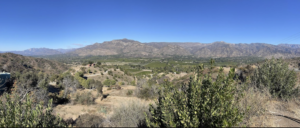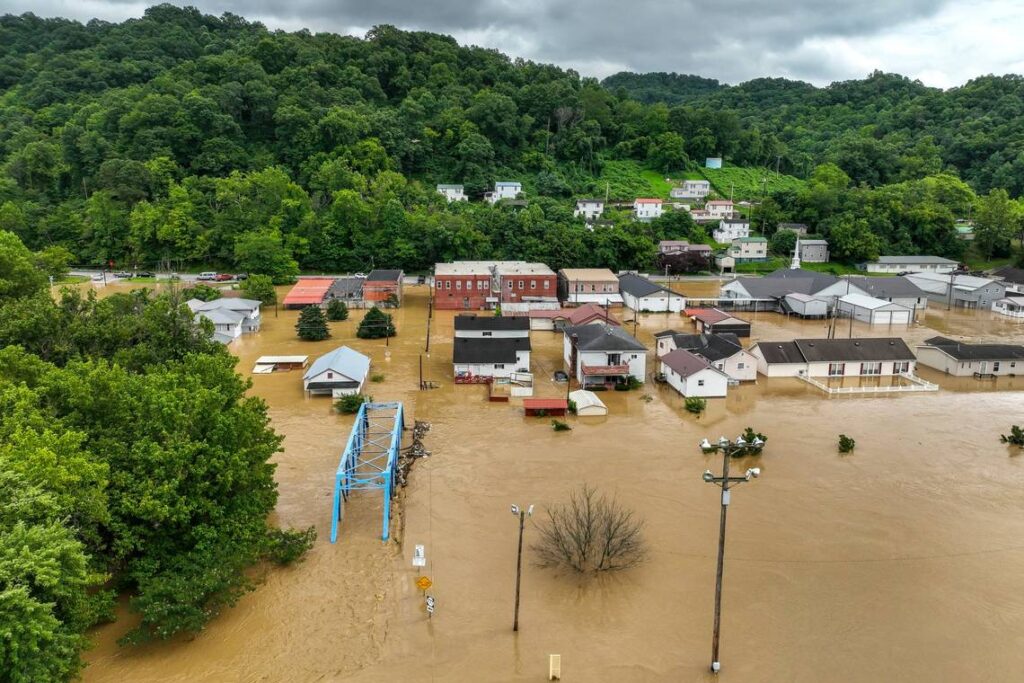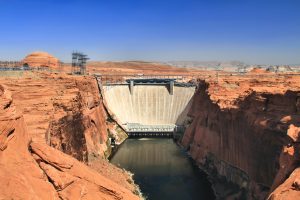Marginalized People Hurt Disproportionally by Climate Change
This year, more intense and frequent natural disasters have fully exposed the reality of a present and dangerous global climate crisis. Those suffering the most consequences of climate change are poor, marginalized people, often people of color.1 The brutal flood that killed 39 people in Kentucky one month ago is a prime example of this phenomenon. Eastern Kentucky is home to some of the poorest communities in the U.S.2 Thousands of those affected still do not have roofs over their heads or access to running water.3 As a hot summer turns into a chilly fall in the mountains of Kentucky, people are still living in tents.4 Survivors are mourning a massive loss of human life and the destruction of their homes and schools, tearing away their sense of security and safety in their towns. Now, they are left to recover and rebuild across 13 rural counties whose residents lived in scarcity before the flood.5
Economic Woes Exacerbated by Flooding
The magnitude of economic pain in the area was already evident before the catastrophic flood turned the region upside-down.6 Residents of the 13 counties engulfed by floodwaters tend to make about half as much money as the median American annual household income, $65,000. Their chance of facing poverty is three times higher than the average American.7 Data from The First Street Foundation, a nonprofit dedicated to researching climate risk, indicates that the region’s highest risk areas for flooding coincide with the areas with lower incomes.8 The communities where people have struggled with food insecurity, poor access to healthcare, and waning employment opportunities for decades are currently dealing with a gut-wrenching predicament post-flood: what to do next.9
Recovery Needs To Be Equitable
Kentucky’s flood resiliency efforts must prioritize these vulnerable communities disproportionately affected by climate change.10 Thousands of displaced Kentuckians are essentially refugees relying on the community and government aid to keep them fed, hydrated, clothed, and sheltered.11 Residents of eastern Kentucky will need a robust housing assistance program People in these areas cannot afford repairs for flood damage.12 Even if they remain there, they cannot afford increasingly expensive flood damage prevention measures like flood insurance.13 Rebuilding and mitigating future harm from floods is going to be a daunting task, mainly because these communities do not have the necessary public funds.14
Climate Science: Heavy Rainfall More Common Now Than Ever in Appalachia
Appalachian Kentucky has a history of flooding, but the flood that occurred at the end of July and into early August broke records in terms of severity.15 A stationary storm front repeatedly dumped precipitation in the same area over five days starting on July 27th.16 The region saw 14 to 16 inches of rainfall, with a precipitation rate of 4 inches per hour.17 The U.S. Geological Survey’s preliminary stream data indicates that the flow at the North Fork of the Kentucky River in Jackson, Kentucky reached a peak that was the highest in 95 years.18 Long-lasting heavy downpours are becoming more common thanks to warming bodies of water that increase the amount of water vapor in the atmosphere.19 According to Kentucky native and head of research and development at the First Street Foundation, Jeremy Porter, “What we are seeing is there are not more rain events, but more heavy rain events occurring with climate change….”20 Data supports the assertion that the climate is changing in Appalachia. Meteorological evidence from The National Climate Assessment shows that the proportion of rainfall during a typical storm has increased by about a third over the past 50 years in Kentucky and Ohio.21
Environmental Justice and Policy in Rural Kentucky
Recognizing the vast inequality between climate change’s effects on wealthy, white populations vs. oppressed, poor, often black and brown populations is just the start of a growing environmental justice movement in the United States.22 The White House website states: “For far too long, communities across our country have faced environmental injustices, bearing the brunt of toxic pollution, enduring underinvestment in infrastructure and critical services, and suffering disproportionate impacts from climate change.”23 The President made a point to visit eastern Kentucky after the flood to address the damage.24 FEMA sent hundreds of rescue officers and $3.6 million to Kentucky after the lethal storms.25 Unfortunately, the FEMA response has not been sufficient enough to tackle the widespread damage to an already hurting region thoroughly.26 A recent 3-day-long special session at the state capitol resulted in the bipartisan passage of a $212.6 million relief package to help repair and replace essential infrastructures like roads and schools.27 Republican Senator Brandon Smith, whose constituents are displaced by the thousands, introduced an amendment to the legislation to add a $50 million affordable housing program.28 However, the amendment failed, leaving eastern Kentuckians without direct individual housing assistance, which is imperative to their recovery from this tragic flood.29 There is still much progress to be made in the deep south regarding fair and equitable climate change resiliency, emergency management, and budgeting policy. Will Kentucky be able to rise to the occasion and protect its residents from future deadly floods?






